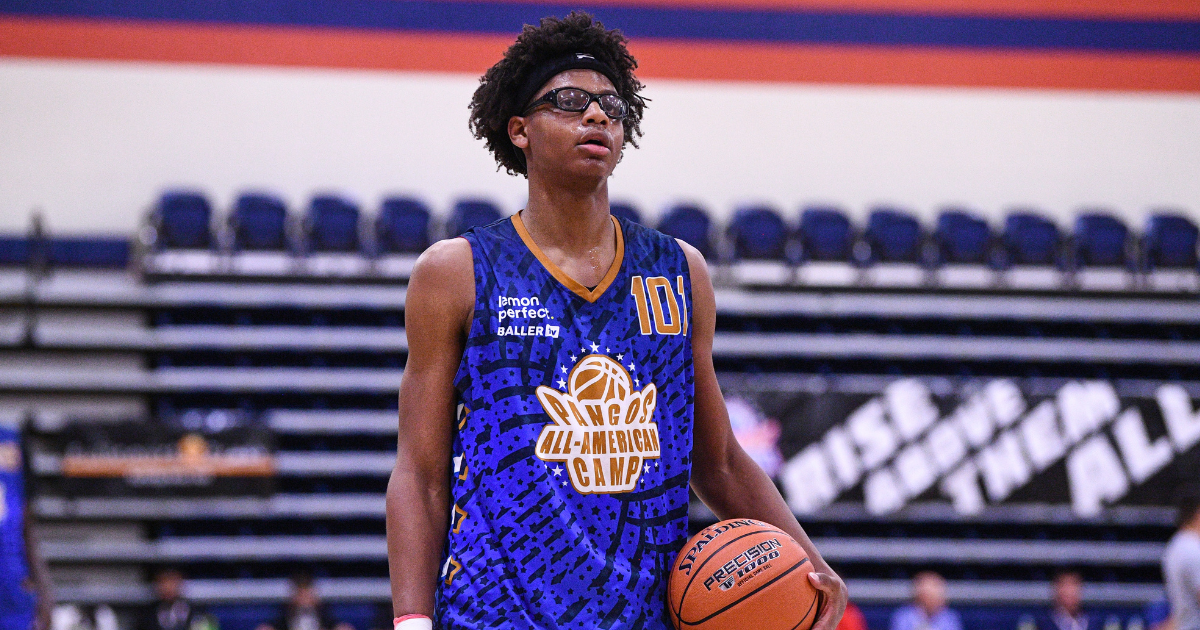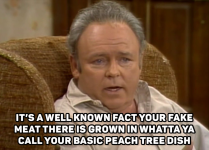You are using an out of date browser. It may not display this or other websites correctly.
You should upgrade or use an alternative browser.
You should upgrade or use an alternative browser.
Illinois Hoops Recruiting Thread
- Status
- Not open for further replies.
skyIdub
Winged Warrior
offer and interest! lol, I have a reading problem.
Is Andrew_Slater trying to use every single font available before end of the year or something?
FIFYNot sure really how things work overseas, but I'd have to believe that there's possibly some cachet that comes from Duke and additional cachet with tourney success. So from the standpoint of securing a Euro contract, this could perhaps help.
Of course, 12mpg and 3ppg won't help if that happens. If he goes to Duke I'll be rooting hard for him to get about 15ppg for a 2-28 Duke team.
Has this been mentioned as a possibility for him?Please Jazz...reclass to the beloved....
Staff has something up their sleave (not nance)

It’s not a bro. It’s a mansiere.
I couldn’t find any gifs of Kramer in the bro, so this is what’s left…
2-0 against NC I'm assuming?FIFY
I prefer the BRO.It’s not a bro. It’s a mansiere.
Lieb would not have been taken in the last two classes with the transfer portal in full effect. No longer need to take bigs to develop. Let someone else develop them and get one from the portal.Misunderstanding: what I was referring to is "It's always seemed like BU has been willing to take flyers on guys to fill scholarships. I can't think of a single one that's really worked out long term and most of them (Kane, Greg E., Vesel...) have transferred out after a year or two so there's been no long term impact."
As to Lieb, he was very clearly a project big, taking the 12th spot. Said spot is frequently a roll the bones deal. I highly doubt that Underwood and staff knew Lieb's development path a priori.
Take the over on ASU from now on, because Coach Nick Irvin will win by 30!!!! Adjustments!!!!!
I wonder which Mac Irvin Fire player Hurley has his sights set on? Tbh it’s difficult to sustain an AC pool of guys that are simply AAU coaches of prospective recruits.
It won't hurt them...good in to Chicago....Take the over on ASU from now on, because Coach Nick Irvin will win by 30!!!! Adjustments!!!!!
Epsilon
M tipping over
- Pdx
Nailed it!2-0 against NC I'm assuming?
Basketball is about wiry strength. Most nba players are actually dropping weight in the offseason now because the extra step in quickness in a pace and space world could literally be worth millions of dollars.OK. I disagree. That muscle would only enhance his power and agility. I can't understand any downside to him playing at 250 if that 30 lb gain has come through increasing his squat, press and deadlift significantly.
Rowinski was listed at 6'8", 250 lbs. CoHawk is two inches taller. Frankly, he could go 20 lbs beyond that and be deadly.
Of course, it's irrelevant beyond speculative value. He'll never get there. Will be surprised if he tops 230. Love the guy and just want to see him reach his potential while wearing the O&B.
I’m not advocating against him lifting at all, but basketball based lifting is very different than other sports because you need the explosion of football (bar speed within the lift), and the conditioning of cross country. Two energy systems that generally work in a give and take in your body have to be perfectly balanced and in sync to reach maximum basketball potential.
The lifting styles that lead to quick muscle and weight gains are often not good for basketball players. When you get into higher rep ranges you naturally lose bar speed at the end of your sets. Basketball lifts are about explosive bar speeds through a full range of motion. I’m guessing fletch has a preferred bar speed range (usually measured in m/s by a recording app) based on how heavy he has the guys going. For a lot of basketball s+c coaches, increasing weight is secondary to maintaining/increasing bar speed.
So that said, the gains still come, but they can be slower at times. And in general, you don’t add weight for the sake of it in basketball anymore. You maximize strength and explosion in a wiry frame.
These are not my words by the way. This is part of a sit down I had with university of Houston my s+c coach Alan Bishop when I was able to visit in December. (You might remember the essay I wrote about houston in the lead up to that tourney game; same trip). I run the s+c program for my team and incorporated his philosophy. Many of my guys lifts actually went down in the transition to his style, but on the court you can see that we are significantly stronger and way more explosive. So while the evidence I present for this is anecdotal over about 20 athletes, it’s rooted in research. Not trying to be argumentative just trying to throw a different perspective and some nerd lifting reading out there for the board.

Top-20 big man James Brown talks 5 college visits, UNC & Duke
2024 big man James Brown discusses his five unofficial visits, as well as interest from North Carolina and Duke.
altgeld88
- Arlington, Virginia
I'm well aware of the argument against basketball players lifting heavy, as I went through it ~ 40 years ago. And I certainly am not questioning your personal experience on the topic running an S&C program. I'm questioning the conventional wisdom on this topic generally for the past umpteen years.Basketball is about wiry strength. Most nba players are actually dropping weight in the offseason now because the extra step in quickness in a pace and space world could literally be worth millions of dollars.
I’m not advocating against him lifting at all, but basketball based lifting is very different than other sports because you need the explosion of football (bar speed within the lift), and the conditioning of cross country. Two energy systems that generally work in a give and take in your body have to be perfectly balanced and in sync to reach maximum basketball potential.
The lifting styles that lead to quick muscle and weight gains are often not good for basketball players. When you get into higher rep ranges you naturally lose bar speed at the end of your sets. Basketball lifts are about explosive bar speeds through a full range of motion. I’m guessing fletch has a preferred bar speed range (usually measured in m/s by a recording app) based on how heavy he has the guys going. For a lot of basketball s+c coaches, increasing weight is secondary to maintaining/increasing bar speed.
So that said, the gains still come, but they can be slower at times. And in general, you don’t add weight for the sake of it in basketball anymore. You maximize strength and explosion in a wiry frame.
These are not my words by the way. This is part of a sit down I had with university of Houston my s+c coach Alan Bishop when I was able to visit in December. (You might remember the essay I wrote about houston in the lead up to that tourney game; same trip). I run the s+c program for my team and incorporated his philosophy. Many of my guys lifts actually went down in the transition to his style, but on the court you can see that we are significantly stronger and way more explosive. So while the evidence I present for this is anecdotal over about 20 athletes, it’s rooted in research. Not trying to be argumentative just trying to throw a different perspective and some nerd lifting reading out there for the board.
Strength is the capacity to exert force against an external resistance. There's certainly an inflection point for weight gain via strength training in basketball that's different from football and other sports, but I rarely see basketball players who couldn't be productively stronger, often by a country mile.
Explosiveness (vertical leap, e.g.) is genetic. It can't be trained. But power can, and, particularly for someone such as CoHawk, would serve him well. I still lift in my mid-50s and am certainly conscious of bar speed and aware of its relation to strength development. A set of squats, for example, trained at the same weight, is more beneficial done explosively out of the hole than slowly.
I also recall some sportswriter gushing over Steph Curry at some point ~ 7-8 yrs ago because he could deadlift 405. That's absurd. He should be deadlifting at least 500 if not well north of that. Leaving that kind of strength on the table is, objectively, daft, even for a guard. Particularly for the guys in D-1 and the pros who are by definition generically gifted. The problem with S&C programs is that really you can do anything with an 18-year-old D-1 athlete and he's going to be bigger and stronger by the time he's 22 no matter what. Again, the issue is how much bigger, stronger, and athletic he might have been by deadlifting, squatting and pressing more and balancing on BOSU balls less.
Luckily, that "GIF" is not owned by Smuckers, or it would have been recalled.HS recruit? Transfer? Any hints? I'll give you a sleeve of peanut butter Oreos!
View attachment 18475
The NCAA is going to make up for the suspension last year and let Kofi come back even though he declared a third time and didn't withdraw?not Butz either
Impressive. These strength guys have to be well versed in the latest applied physiology. Increased muscle fiber recruitment in a dynamic fashion is key --- much more than muscle cell hypertrophy, in this case.I'm well aware of the argument against basketball players lifting heavy, as I went through it ~ 40 years ago. And I certainly am not questioning your personal experience on the topic running an S&C program. I'm questioning the conventional wisdom on this topic generally for the past umpteen years.
Strength is the capacity to exert force against an external resistance. There's certainly an inflection point for weight gain via strength training in basketball that's different from football and other sports, but I rarely see basketball players who couldn't be productively stronger, often by a country mile.
Explosiveness (vertical leap, e.g.) is genetic. It can't be trained. But power can, and, particularly for someone such as CoHawk, would serve him well. I still lift in my mid-50s and am certainly conscious of bar speed and aware of its relation to strength development. A set of squats, for example, trained at the same weight, is more beneficial done explosively out of the hole than slowly.
I also recall some sportswriter gushing over Steph Curry at some point ~ 7-8 yrs ago because he could deadlift 405. That's absurd. He should be deadlifting at least 500 if not well north of that. Leaving that kind of strength on the table is, objectively, daft, even for a guard. Particularly for the guys in D-1 and the pros who are by definition generically gifted. The problem with S&C programs is that really you can do anything with an 18-year-old D-1 athlete and he's going to be bigger and stronger by the time he's 22 no matter what. Again, the issue is how much bigger, stronger, and athletic he might have been by deadlifting, squatting and pressing more and balancing on BOSU balls less.
In other words, step it up, Coleman !
Yeah that’s what I was trying to get at when I asked my original question. Do we think Brad will stop taking developmental project bigs and try to get transfers? It seems to be the case. I’d definitely miss having a guy like Giorgi or BBV, but most of the other guys have basically just been roster filler.Lieb would not have been taken in the last two classes with the transfer portal in full effect. No longer need to take bigs to develop. Let someone else develop them and get one from the portal.
Yeah but he can only play three games to make up for the ones he missed.The NCAA is going to make up for the suspension last year and let Kofi come back even though he declared a third time and didn't withdraw?
- Status
- Not open for further replies.



